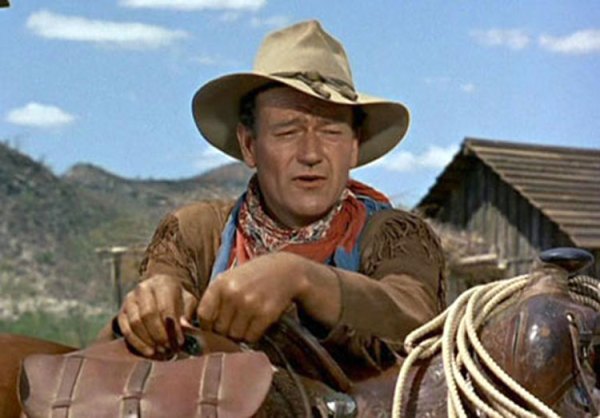THE GOLDEN AGE OF GOSSIP
What Legendary Movie Stars Said about Each Other
Part Four of a Four-Part Series
The dominant musical movie star of the “golden age” surely was Bing Crosby, but not all his co-stars were big fans, most especially Dorothy Lamour, his leading lady in the highly popular series of “Road” pictures they made with Bob Hope. Lamour complained it was Crosby who wanted her out of the “Road” pictures when she started to put on weight and show her age and grumbled that Bing never used her in any of his TV specials while Hope always did.
 Bing Crosby
Bing Crosby
“He never was carefree like his image,” Lamour said. “He was tightly curled. His poor wife, Dixie Lee, slipped into alcoholism because of his indifference. I never found Bing anything but tightly controlled. He was nice, but distant.”
Joan Blondell, who starred with Crosby in East Side of Heaven [1939], had a similar opinion, saying, “I found Bing cool, standoffish, but completely professional.”
And Jane Wyman, who sang the Oscar-winning tune “In the Cool, Cool, Cool of the Evening” with Crosby in Frank Capra’s Here Comes the Groom [1951], remembered him fondly, with some reservations, as “the supreme professional, always accommodating, but he’s the big star, so you watch and listen when he’s speaking. When I got to sing with Bing, it was a dream come true.”
 John Wayne
John Wayne
One star almost nobody had any bad memories about was John Wayne, who befriended actress Anna Lee when they first worked together in Seven Sinners [1940] and remained her friend for the rest of his life. When she was playing his leading lady in Flying Tigers [1942], Lee learned Wayne was very depressed about not being able to serve in the military during World War II.
“(He) was making peanuts compared to Coop [Gary Cooper] or [Clark] Gable. He really wanted to be considered a good actor. To me Big John was terrific. I mean, did you ever see Larry Olivier in a western? He was, at thirty-five, one of the best-looking men in movies, and he knew it. John Wayne was such a nice man, but he was always a little shy with women, particularly blondes.”
Perhaps no other leading lady was as perfect for John Wayne as his frequent co-star Maureen O ‘Hara, who adored Wayne, even when they often wound up in rough and tumble scenes together on screen and she ended up with bruises.
O ‘Hara quoted Wayne‘s children as telling her, “‘You can stand toe to toe with our dad!’ And I did, too, and had the bruises to prove it. In The Quiet Man [1952], when I socked him in the scene in the kitchen, the pain that went up my arm was incredible. I hid it in my petticoat, but Duke came over to me and asked to see my hand because, ‘You nearly broke my jaw!’ When he looked at my hand, every finger was like a sausage, so I was sent to the hospital because I’d broken a bone in my wrist. But I’d meant to kill him, I was so mad at him that day”
 John Wayne and Maureen O’Hara in The Quiet Man
John Wayne and Maureen O’Hara in The Quiet Man
Marie Windsor, who worked with Wayne in Cahill, U.S. Marshal [1973], remembered him as an actor who had “extraordinary timing and was a great listener. He was the kind of actor who shared with the other actor.”
Even actors who bristled at Wayne’s politically right-wing attitudes seemed to have a great appreciation for him as an acting partner. Kirk Douglas, who made several films with Wayne, is a good example because his political attitudes are the reverse of Wayne’s.
“Wayne and I made four movies together,” said Douglas. “Politically, we were completely apart. We might have dinner together once during the making of a picture. Yet he’d call me and suggest we make a picture together. We had a respect for each other.”
Douglas likes to tell the story about the time Wayne came to a dinner party where they screened a print of Lust For Life [1956], which had not yet been released. Wayne was troubled by the unheroic behavior of Douglas as painter Vincent Van Gogh and, after a few drinks, asked Douglas to go out onto the veranda with him.
“He berated me!” Douglas recalled. “He said, ‘How the hell could you play a goddamn character like that? We should never play those kind of weak, sniveling characters. I don’t ever want to see you in a part like that again! They have no dignity!”
Douglas explained to Wayne that he thought Van Gogh was a fascinating character, much more interesting than playing a good guy, adding, “I’d rather play Doc Holliday than Wyatt Earp.”
While Hollywood’s “golden age” was still in full flower, it was rare for any actor to say anything negative about a fellow actor. The studios ran things in those days and wouldn’t permit it. Now, of course, bad vibes between fellow actors are commonly reported in the tabloid press or in their online blogs.
That’s why you might be surprised at some of the things they had to say about their co-stars many years after the “golden age” came to an end.
…..
This is Part Four of a four-part series…
–James Bawden and Ron Miller for Classic Movie Hub
Retired journalists James Bawden and Ron Miller are the authors of Conversations with Classic Film Stars, an astonishing collection of rare interviews with the greatest celebrities of Hollywood’s golden age. Conducted over the course of more than fifty years, they recount intimate conversations with some of the most famous leading men and women of the era, including Douglas Fairbanks Jr., Joseph Cotten, Cary Grant, Gloria Swanson, Joan Fontaine, Loretta Young, Kirk Douglas, and many more.
You can purchase the book on amazon by clicking here:






















































